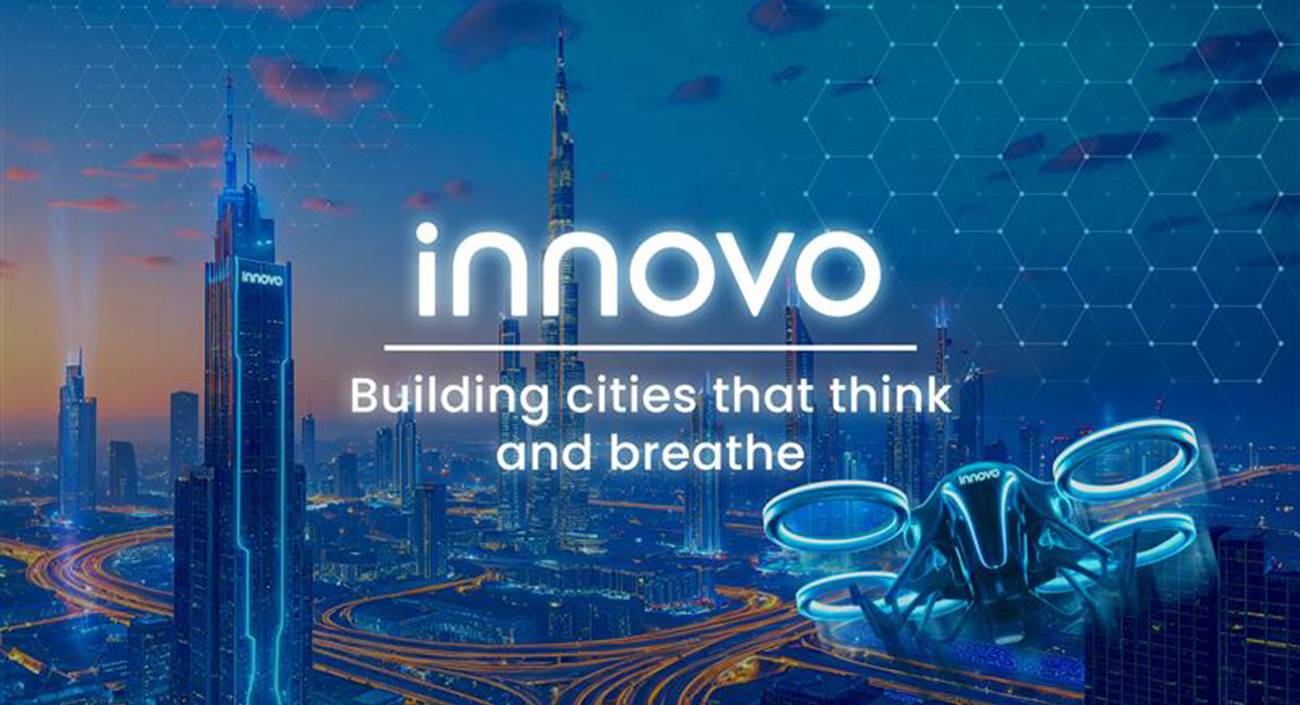Building cities that think and breathe - Kinan Sulaiman, Head of Smart Cities, Innovo
Thought Leadership
01-09-2025
When we think of a city, we picture skylines and landmarks. But behind the scenes, thousands of coordinated decisions, from traffic signals to road layouts, keep everything moving. As populations grow and economies expand, smart urban planning has shifted from luxury to necessity, powered by digital tools that can keep pace with modern life.
Cities of data
Data is the new cement of city life. Real-time information flows from construction sites, utilities, and transport systems into insights that guide planning, optimise energy use, and improve liveability. When analysed over time, this data not only solves immediate issues but also predicts future needs, from infrastructure maintenance to population growth.
The results are tangible. Safer roads, reliable utilities, reduced waste, and cleaner air follow naturally from data-led decisions. At the heart of this transformation are Digital Twins, virtual mirrors that let cities learn, adapt, and respond in real time. By turning data into a living pulse, they enable holistic urban management where streets, systems, and structures evolve intelligently.
The results are tangible. Safer roads, reliable utilities, reduced waste, and cleaner air follow naturally from data-led decisions. At the heart of this transformation are Digital Twins, virtual mirrors that let cities learn, adapt, and respond in real time. By turning data into a living pulse, they enable holistic urban management where streets, systems, and structures evolve intelligently.
This vision is already taking shape in Dubai, from Expo City Dubai, where sustainability and technology come together to create a lively, modern neighbourhood, to District 2020, which blends work, life, and leisure through seamless smart systems and vibrant community spaces. Globally, the impact is recognised, with Dubai advancing eight places to rank fourth worldwide and Abu Dhabi following fifth in the IMD Smart City Index, an annual ranking that measures both the economic and technological progress of cities.
Digital foundations and smarter construction
Building smarter cities relies on a digital backbone. IoT sensors monitor humidity, traffic, and energy use; smart meters and cameras feed live data; and edge computing ensures decisions are made instantly. On the software side, integration
platforms combine data from grids, transport, and waste into a unified system, with open APIs allowing new innovations to plug in seamlessly. This shift is no longer theoretical. A survey by HiveMQ found more than 60% of urban leaders say real-time IoT data has already reshaped daily city operations, from predictive traffic light management to climate-responsive buildings.
AI acts as the city’s central nervous system, predicting energy demand, managing waste, improving safety, and keeping traffic flowing. Machine learning adds self-monitoring and even self-healing capabilities, detecting and resolving issues in real time to keep services running with minimal downtime.
Smarter construction is where the process begins. Modular builds and robotics shorten timelines and reduce waste, while digital tracking monitors carbon footprint, performance, and user satisfaction. Combined with digital twins and real-time feedback loops, construction becomes a cycle of continuous improvement, delivering projects faster, cleaner, and smarter.
The cities we build today must be designed for tomorrow - connected, adaptive, and people-focused. As technology reshapes construction and skylines evolve, cities will no longer just be built for us, they will be built with us, learning and adapting alongside people.
Source: meconstructionnews.com
Recent News
Innovo announces three major milestones advancing sustainability in the built environment
Sustainability
24-10-2024
